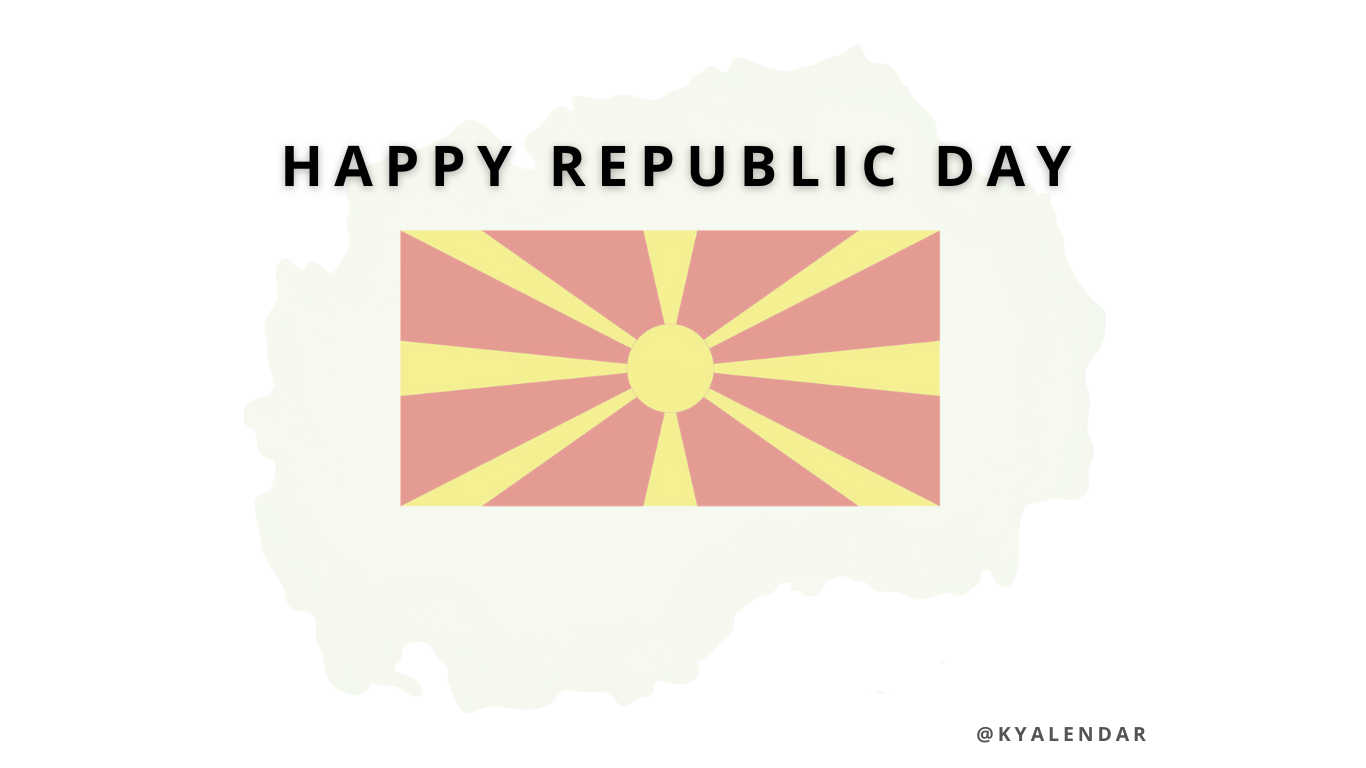
- This event has passed.
Republic Day (North Macedonia)
August 2

Republic Day in North Macedonia celebrated on August 2nd, is one of the country’s most significant national holidays. This day commemorates two important historical events: the Ilinden Uprising of 1903 and the first session of the Anti-Fascist Assembly for the National Liberation of Macedonia (ASNOM) in 1944. Here are the detailed explanations of these events and how Republic Day is observed in North Macedonia:
Historical Significance
Ilinden Uprising (1903)
- Background: The Ilinden Uprising, named after the feast of St. Elijah (Ilinden), was a revolt against Ottoman rule. It was organized by the Internal Macedonian Revolutionary Organization (IMRO).
- Events: The uprising began on August 2, 1903, in the town of Kruševo, where the rebels declared the Kruševo Republic, a short-lived, self-governing entity.
- Outcome: Although the uprising was eventually crushed by the Ottoman forces, it is remembered as a symbol of the struggle for Macedonian independence and national identity.
First Session of ASNOM (1944)
- Background: ASNOM stands for the Anti-Fascist Assembly for the National Liberation of Macedonia. It was established during World War II as part of the resistance against Axis occupation.
- Events: On August 2, 1944, ASNOM held its first session in the monastery of St. Prohor Pčinjski. During this session, the foundations of the modern Macedonian state were laid, and it was decided that Macedonia would join the Yugoslav federation.
- Outcome: ASNOM’s decisions were crucial in establishing the legal and political framework for the Republic of Macedonia as part of post-war Yugoslavia.
Celebrations and Observances
National Ceremonies
- Official Commemorations: The President and other high-ranking officials of North Macedonia typically participate in official ceremonies. These often take place at significant historical sites such as the ASNOM memorial in Pelince and the monument of the Ilinden Uprising in Kruševo.
- Speeches and Wreath-Laying: Officials give speeches highlighting the historical significance of the day and lay wreaths at monuments honoring those who fought for Macedonian independence and freedom.
Cultural Events
- Performances and Parades: Various cultural performances, including traditional music, dance, and parades, are organized to celebrate Macedonian heritage.
- Historical Reenactments: Reenactments of key events from the Ilinden Uprising and the first session of ASNOM are often performed to educate the public about their historical importance.
Public Participation
- Community Gatherings: Citizens across the country participate in local celebrations, including concerts, exhibitions, and communal feasts.
- Educational Activities: Schools and universities often hold special programs and lectures to educate students about the historical significance of Republic Day.
Symbolism
- National Pride: Republic Day is a source of national pride and a reminder of the struggles and achievements that have shaped the modern Macedonian state.
- Unity and Independence: The day symbolizes the unity of the Macedonian people in their quest for independence and self-determination.
Conclusion
Republic Day on August 2nd is a pivotal celebration in North Macedonia, honouring the Ilinden Uprising of 1903 and the first session of ASNOM in 1944. Through official ceremonies, cultural events, and public participation, the day serves to remember and celebrate the country’s rich history and the enduring spirit of its people in their pursuit of freedom and independence.